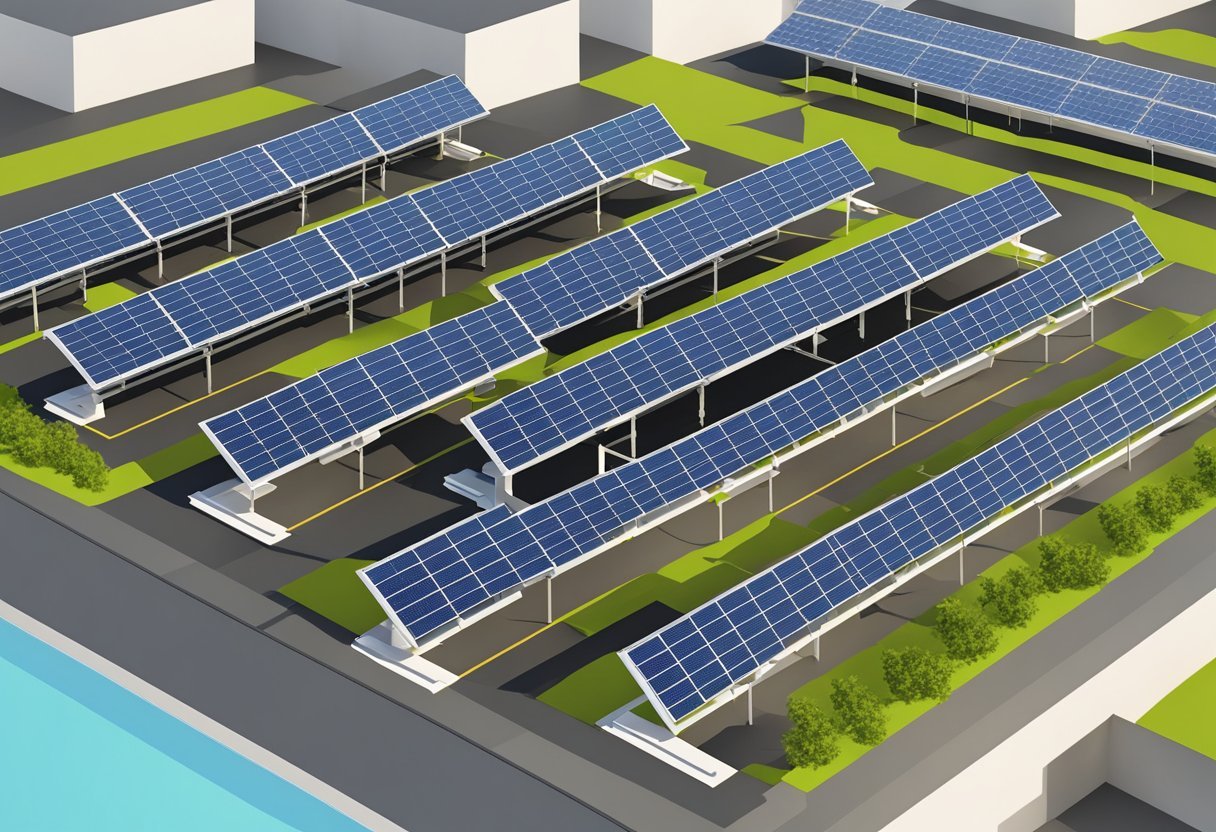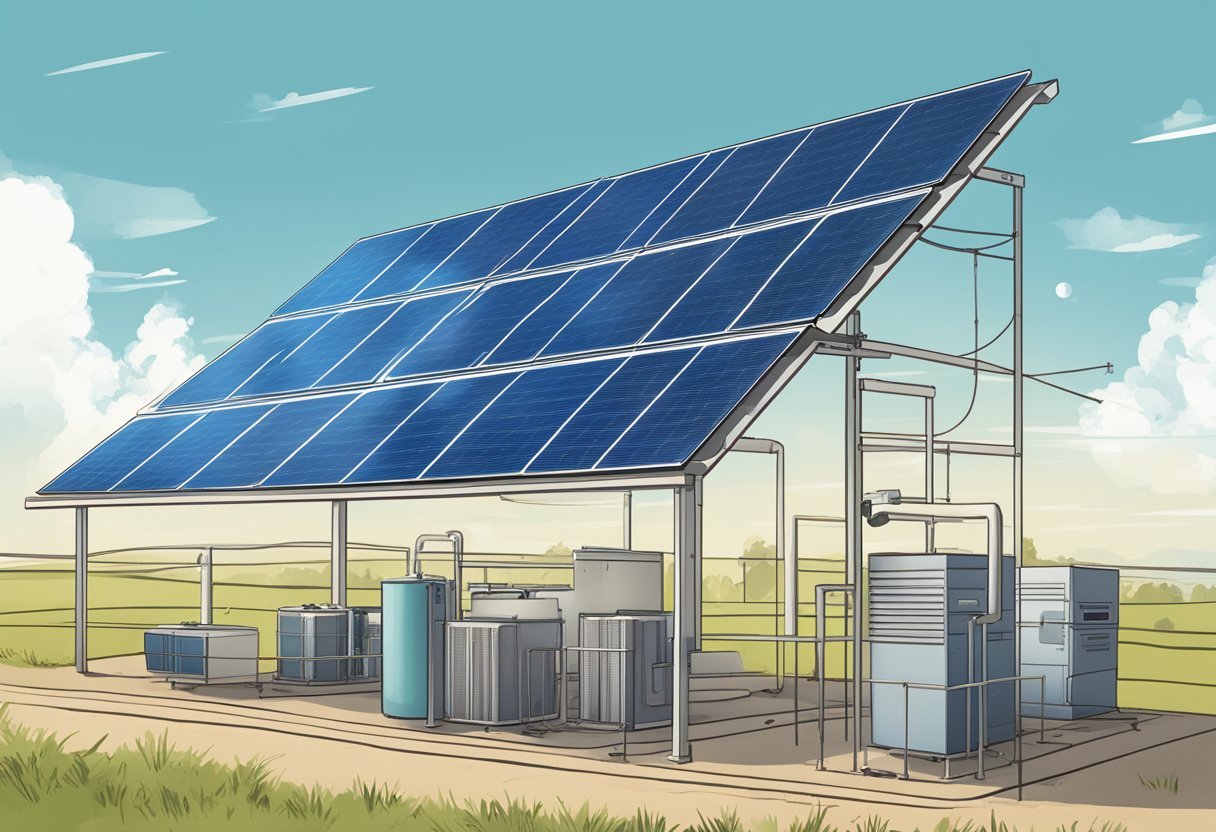PTO Solar, a term that stands for "Permission to Operate," is vital in the realm of solar energy systems. It represents the official go-ahead given by the utility company, allowing a newly installed solar power system to be connected to the grid. Obtaining PTO is the culmination of a comprehensive process that involves system installation, inspections, and a thorough utility review to ensure safety and compliance with all relevant regulations.
After a solar system is installed on a property, there is a sequence of steps that must be followed before it begins operating and generating energy savings. These steps include a meticulous application procedure, potential costs and fees, and meeting the requirements specific to local regulations. The process ensures that once the solar power system is energized, it will perform optimally while adhering to grid standards. Understanding the intricacies of this process and navigating through the technical, bureaucratic, and regulatory landscapes is essential for a smooth transition to solar energy utilization.
Key Takeaways
Permission to Operate is a critical final step in activating a solar energy system.
The PTO process includes installation, utility reviews, and adherence to local regulations.
Ensuring proper procedural follow-through maximizes solar system efficiency and compliance.
Understanding PTO Solar
Before solar system owners can harness the sun's power within the electrical grid, they must navigate the critical step of obtaining Permission to Operate (PTO) from their utility company. This certification is essential for a safe and compliant connection to the power network.
Definition of Permission to Operate (PTO)
Permission to Operate (PTO) is the formal authorization granted by a utility company, signifying that a solar system is approved to be connected to the electrical grid. This approval follows thorough inspections and compliance checks to ensure that the solar installation meets all local, state, and utility standards. Without PTO, solar systems cannot legally begin feeding electricity into the grid.
The Importance of PTO
The importance of Permission to Operate lies in its role as a safety and regulatory benchmark. A utility company issues PTO only after confirming that a solar system:
has been properly installed,
will not harm the grid or its operators,
and adheres to all applicable electrical codes.
By obtaining PTO, homeowners and businesses ensure that their solar systems are recognized as legitimate and operational by the authorities. This process protects the system owner, the utility, and the broader community by maintaining the integrity and safety of the power grid.
Solar System Installation Process
The installation of a solar system is a methodical process that involves multiple assessments and steps to ensure efficient functioning and regulatory compliance. This section outlines the critical phases of installing a rooftop solar system, from selecting a qualified installer to the final testing of the system.
Initial Solar Site Survey
An initial solar site survey involves a thorough evaluation of a property’s solar viability, including roof orientation, shading, and structural integrity. This survey determines the best location for the solar panels to maximize sun exposure during peak hours.
Initial Solar System Design
Following the site survey, the installer will design a solar system that suits the property's energy requirements. This design includes the number of panels, their arrangement, and the inverter's placement.
Solar System Structural Assessment
A solar system structural assessment ensures the rooftop can support the weight of the system. Modifications may be needed to fortify the structure, a critical step to prevent future complications.
Solar System Electrical Assessment
The solar system electrical assessment encompasses an evaluation of the current electrical system to confirm it can integrate with the new solar setup. This may involve upgrading the electrical panel or wiring to support the additional power flow.
Solar System Permitting Approval
Obtaining local solar system permitting approval is essential before installation begins. This process may vary by location but typically involves submitting the site survey and system designs to local building authorities for review.
Solar Panels Installation and Testing
Finally, the solar panels and associated equipment are installed following design and permit approvals. Post-installation, rigorous testing is conducted to guarantee everything operates as intended, ensuring the solar system is ready to produce clean, renewable energy for the property.
The precise steps may slightly vary based on jurisdiction or specific circumstances of the installation site, but these are the core components of installing a rooftop solar power generation system.
Interconnection to the Utility Grid
The interconnection of solar photovoltaic (PV) systems to the utility grid requires careful coordination with utilities to ensure compliance with safety standards and grid reliability. This process involves specific steps from application submission to receiving permission to operate (PTO).
Interconnection Application
An interconnection application is a key document that individuals or companies must submit to their local utility when seeking to connect a solar PV system to the electrical grid. This application includes detailed technical specifications of the planned solar installation and its components. The thoroughness of this application affects the speed and efficiency of the subsequent approval process. Document requirements often vary but typically include:
Site plans
Electrical diagrams
Equipment ratings
Utility Inspection and Approvals
Following the submission of the interconnection application, the utility conducts an inspection to verify that the installation adheres to relevant safety standards and does not compromise grid stability. This inspection is a crucial step to ensure that all distributed generation (DG) systems interconnect safely and reliably. After a successful inspection, the utility issues formal approvals which may include:
Interconnection Agreement
Permission to operate (PTO)
Through the interconnection process, utilities evaluate the potential impact of the new solar PV system on the electrical grid. Technical assessments consider the capacity of the current infrastructure to handle the added generation and any necessary upgrades to maintain grid integrity.
Costs and Fees
Installing a photovoltaic (PV) system to enable solar energy generation involves a variety of costs and fees that can affect the overall affordability and economic value of the investment. It is crucial for consumers to consider these financial aspects prior to installation and understand how they could impact the cost-benefit analysis of a solar energy system.
Overview of Possible Charges
When considering the installation of a solar PV system, several charges could arise. These may include the:
Cost of Equipment: The price of solar panels, inverters, and other necessary components.
Installation Costs: Labor and additional expenses related to installing the PV system.
Permitting Fees: Money paid to local governments for the right to install and operate the solar system.
Inspection Fees: Charges for the required safety and compliance inspections post-installation.
Interconnection Charges: Costs associated with connecting the solar system to the grid.
Metering Fee: If a new meter is required for net metering, there may be an associated cost.
Understanding Fees Associated with PTO
Permission to Operate (PTO), which is the authorization from the utility company to officially connect a solar PV system to the electric grid, often involves several fees:
Application Fee: A charge for processing the PTO request.
Cost of Interconnection: This encompasses expenses related to upgrading the grid connection to accommodate the solar system.
Sometimes, there might even be a study to determine the impact of the solar system on the local grid, which could incur additional costs.
Consumers might encounter variable fees depending on their jurisdiction or utility company. In some cases, the application process can lead to unexpected costs, such as upgrade charges if the existing grid infrastructure requires modification to handle the new solar input.
Net Metering and Its Impact on Costs
Net metering can significantly influence the economics of a residential solar system by allowing homeowners to receive credit for the excess electricity their solar panels produce. The details vary by location, but generally, customers with net metering can expect:
Reduced Electricity Bills: Credits accrued via net metering can offset charges for electricity used when the sun isn't shining.
Metering Charges: There may be a one-time meter fee for installing or upgrading to a net meter.
The financial benefits accrued through net metering policies can substantially lower the effective cost of a solar PV system over its lifespan. It is essential to understand local net metering regulations and factor them into the solar investment decision.
The PTO Application Procedure
Securing approval for a PTO (Permission to Operate) Solar setup demands thorough preparation and attention to detail. Applicants must collect appropriate information, submit the application, and ensure persistent follow-up while being prepared to tackle any delays and issues.
Gathering Necessary Information
Before submission, it's imperative to accumulate all necessary information. This encompasses technical specifications of the solar panels and inverter, site plans, and safety protocols. Equally, documentation verifying compliance with local regulations is necessary. The team should create a checklist to ensure no critical information is omitted.
Technical Specifications: Model numbers, sizes, certifications.
Site Plans: Detailed layout, including location of units, wiring schematics.
Regulatory Compliance: Proof of adherence to local standards and guidelines.
Submission and Follow-Up
With all information in hand, the application is submitted to the relevant local authorities. It's essential to note the submission date and track the application's progress through the provided channels, which may include online portals or direct emails. Regular follow-up can expedite the process, and applicants should prepare to provide additional details if requested.
Submission Method: Online portal, email, mail, or in-person.
Tracking Progress: Reference numbers, online status checks, scheduled follow-up calls.
Dealing with Delays and Issues
Even the most meticulously prepared PTO application may encounter setbacks. In such events, proactive communication and problem-solving with the authority are crucial. Keep detailed records of correspondences and responses to address delays and issues swiftly and effectively.
Documenting Correspondences: Date-stamped emails, written responses, phone call summaries.
Resolution Strategies: Point-of-contact identification, clarification requests, alternative solutions discussion.
Final Steps Before Energizing Your Solar System
Before a solar system can be energized, ensuring compliance with safety standards and carrying out thorough testing are crucial. These final steps confirm that the system is ready for safe and effective operation.
The Importance of Compliance and Safety
Compliance with local and national electrical codes is non-negotiable when activating your solar system. An inspector will review the system to ensure that all electrical work is up to code and the system is installed according to the manufacturer's specifications. This includes checking the proper installation of inverters and metering equipment, especially for grid-tied solar systems. The safety is paramount, not only for the owners and operators but also for utility workers who may interact with the system.
Compliance Checklist:
Inverter installation and connection
Proper metering equipment setup
Electrical wiring and protection devices
Structural integrity of mounting equipment
Adequate labeling of electrical components
Adhering to these safety standards not only protects all parties involved but can also prevent costly repairs and mitigate the risk of system downtime after activation.
Activation and Final Testing
Once the system has passed all compliance checks, the activation stage involves a series of final tests to ensure functionality. These testing purposes serve to validate that every component of the solar array performs optimally before it is put into service. For grid-tied systems, coordination with the local utility company may be needed to confirm that the interconnection can proceed safely.
Testing Steps:
Verify proper voltage levels
Ensure polarity is correct
Conduct an insulation resistance test
Check that all connections are secure
Following these steps, a professional may engage the system incrementally to monitor its interaction with the grid and look for any discrepancies. When all tests are successful and the system is deemed fully operational, it can be safely energized, marking the final step of the solar system's installation and commissioning process.
Understanding Your Solar System's Performance
To truly comprehend the performance of a solar system, one must regularly monitor its output and ensure diligent maintenance. Systematic scrutiny and upkeep are critical to harnessing optimal energy from sunlight.
Monitoring System Output
Real-Time Data: Monitoring devices track the solar panels' productivity by measuring the direct current (DC) output which is then converted to alternating current (AC) by the inverter. This process reflects the system's efficiency in converting sunlight to electricity. Users typically have access to this data through online platforms or displays provided by the manufacturer.
Comparison With Estimates: Data on a solar system should be consistent with initial performance estimates. A discrepancy might indicate technical issues or environmental obstructions. For rooftop installations, it is crucial to account for specific angles and exposures to sunlight, which can influence the output readings.
Maintenance and Support
Scheduled Inspections: Regular maintenance check-ups help in identifying potential malfunctions early on. Inspections should include cleaning solar panels to remove debris or dirt that could obstruct sunlight.
Technical Support: A professional support team should be consulted for performance-related queries or malfunctions. Immediate attention to inverter alerts or a significant drop in performance protects the system's longevity and ensures consistent power supply to the power grid.
Combining precise monitoring with committed maintenance creates a resilient and efficient solar system.
Customer Experience and Support
When it comes to Permission to Operate (PTO) Solar, customer experience and support are pivotal. These aspects are significantly shaped by the expertise of the installation team and the quality of ongoing customer service.
The Role of the Installation Team
The installation team is the backbone of a successful solar project, with companies like Blue Raven Solar showcasing the importance of a proficient installer. They not only carry out the technical aspects of installing photovoltaic panels but also guide customers through the administrative processes, such as obtaining approvals from local Authorities Having Jurisdiction (AHJ). A capable team is essential for ensuring that all interconnection requirements are met efficiently, thereby preventing delays in system activation.
Customer Service and Ongoing Assistance
After installation, the support team's role transitions to maintaining a positive customer relationship through customer service. They provide clients with resources and assistance for monitoring system performance and facilitate any necessary interventions. Swift and effective support is key to resolving issues, whether they are technical glitches or administrative hurdles related to PTO. This ongoing assistance substantiates the value of the investment and affirms the customer's decision to adopt solar energy.
Localization and Regulatory Considerations
PTO Solar installations are subject to a variety of local and state regulations that affect their size, location, and interaction with residential needs and utilities. Navigating these rules is crucial for compliance and smooth operation.
Local and State Regulations
Local and state governments have established regulations that are imperative for the installation and operation of solar power systems. Residential solar projects must adhere to specific zoning laws, building codes, and safety standards. The size and location of the solar installation are typically influenced by local ordinances, which can affect the system’s efficacy and environmental impact. It's vital to consult with local authorities to ensure all requirements are met before proceeding with the installation.
Zoning Laws
Determine permissible system size and placement
Protect residential aesthetics and local land use
Building Codes and Safety Standards
Ensure the structural integrity of solar installations
Maintain public safety and welfare
Working with Local Utility Companies
Successful integration of a PTO Solar system into the local power grid involves cooperation with local utility companies. These entities have an established set of interconnection standards and net metering policies that dictate how solar energy is fed back into the grid and how it's accounted for.
Interconnection Standards: Procedures and requirements for connecting solar systems to the grid.
Include size limits and technical specifications
Affect residential and commercial installations differently
Net Metering Policies: Determine the credit solar system owners receive for excess power generated.
Vary by utility company and location
Essential for calculating the return on investment
Timeline Expectations
When considering the interconnection process for small-scale solar PV systems, the timeline from application to Permission to Operate (PTO) is a crucial aspect for installers and customers. Understanding the average time frame and the factors that influence the duration of this process helps set realistic expectations and plan accordingly.
Average Time Frame for PTO
The average time frame for obtaining Permission to Operate can vary significantly but generally spans from a few weeks to several months. Evidence shows that the interconnection process can be lengthy and intricate, which necessitates patience from all parties involved. Data across multiple utilities indicate that the time frame can be as short as one month for some and extend beyond six months for others, depending on a range of factors.
Factors Influencing the Duration
Regulatory Environment: The local regulatory policies and requirements are primary determinants in the interconnection timeline. Some states have streamlined procedures in place, which can result in faster interconnection times.
Utility Practices: The specific practices and efficiency of the utility company handling the solar PV interconnection play a significant role. Companies with more experience in handling solar interconnections tend to complete the process more swiftly.
System Size and Complexity: Larger and more complex solar PV systems generally require a more extended review period, which can lengthen the time frame for PTO.
Grid Capacity: The existing capacity of the grid to accommodate the new solar PV system without upgrades influences the time it takes to receive PTO. Should grid enhancements be necessary, the timeline could be extended.
The combination of these factors, among others, determines the actual time frame for receiving permission to operate a small-scale solar PV system. It's essential for installers and customers to engage with local utilities and regulatory bodies to gain a better understanding of the anticipated duration and to navigate the process as efficiently as possible.
Maximizing Efficiency
In the realm of photovoltaic (PV) systems, maximizing efficiency is pivotal. It involves enhancing solar panel performance, streamlining interconnection processes, and circumventing common impediments.
Optimizing Solar Panel Performance
To optimize a solar panel's performance, attention to solar cell efficiency and minimizing losses is fundamental. This can be achieved through the use of high-voltage DC converters which enhance the electric energy generation of solar stations. They play a pivotal role in transforming the variable direct current (DC) output from solar panels into the stable form required for grid integration and use in homes and businesses. Furthermore, the implementation of hybrid photovoltaic modules significantly augments performance by capturing a broader spectrum of solar radiation.
Reducing Interconnection Timelines
Reducing timelines in the interconnection of solar power stations is crucial for swift energy deployment. Streamlining this process involves standardizing procedures and implementing clear guidelines for compliance. By accelerating the pace at which solar installations can connect to the grid, the photovoltaic industry can greatly enhance its competitive edge.
Strategies for Steering Clear of Common Setbacks
To steer clear of common setbacks in solar power deployment, continuous monitoring and preventive maintenance are key. This includes regular system checks to ensure all components, including the power take-off (PTO) system, are functioning at peak efficiency. Anticipating weather-related impacts and maintaining clean solar panel surfaces can also mitigate potential performance issues. Implementing these strategies helps in maintaining consistent energy output and prolongs the life of solar components.
Frequently Asked Questions
In this section, one can explore the most common queries related to obtaining a Permission to Operate (PTO) for new solar panel installations, checking the status of Net Metering applications, and understanding the process and agreements involved.
What steps are involved in obtaining a Permission to Operate (PTO) for a new solar panel installation?
For a new solar panel installation, obtaining a PTO typically involves submitting an application to the local utility, passing an electrical inspection, and then waiting for the utility company to grant permission. One comprehensive report on interconnection timelines provides detailed insights into the process which can be lengthy and complex.
How can I check the status of my Net Metering application?
The status of a Net Metering application can usually be checked through the utility provider’s website or by contacting their customer service directly. Utility companies often offer online portals where one can monitor the progress of their application.
What are the risks of activating my solar panels before receiving official Permission to Operate?
Activating solar panels without a PTO can lead to safety risks, non-compliance with utility regulations, and potential forfeiture of financial benefits or rebates. It is crucial to wait for official approval to avoid these risks.
How does an interconnection agreement affect the installation and operation of a residential solar system?
An interconnection agreement outlines the terms and conditions between the solar system owner and the utility company, detailing how the system will connect to the grid. It affects installation procedures, safety requirements, and the operation of the solar system within the grid infrastructure.
What should I expect from the PTO process when installing Tesla solar panels?
When installing Tesla solar panels, one should expect to work closely with Tesla’s team, who will usually handle the PTO process on the customer's behalf. This includes system design approval, coordination for inspections, and communication with the utility for the final PTO.
Can you describe the purpose of PowerClerk Interconnect in the solar panel PTO process?
PowerClerk Interconnect is a platform used by utility companies to streamline the application and workflow process for interconnecting distributed generation systems, like solar panels, to the grid. It serves as a management tool for processing applications, tracking statuses, and facilitating communication between utilities and applicants.









